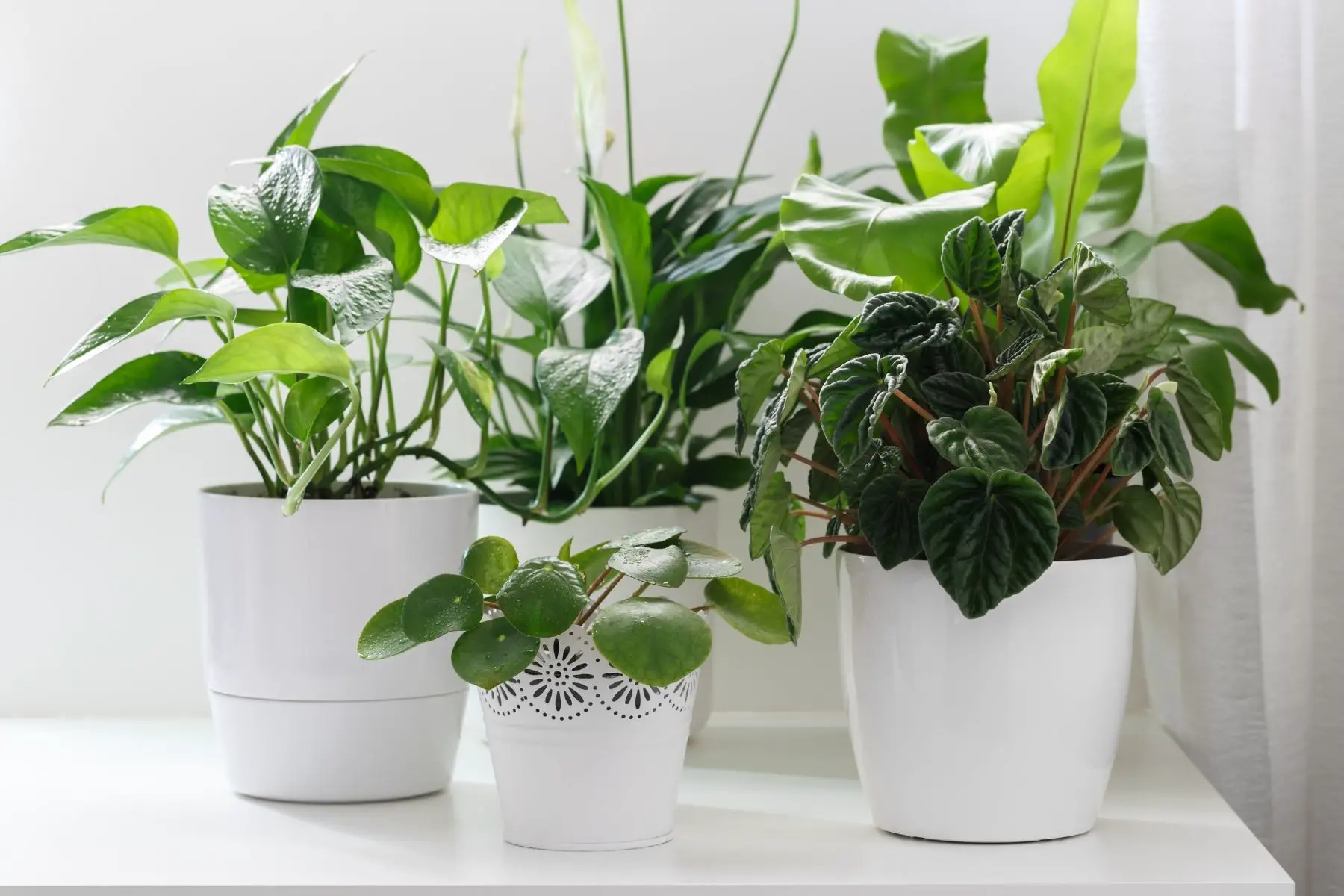Last Updated on April 10, 2024 by Real Men Sow
Long, trailing stems are characteristic of trailing house plants. It’s a great way for them to be seen, as their stems can cascade down to dramatic effect. This adds depth to your house plant displays and brings softness and softness to your room.
How To Grow Trailing House Plants
You should ensure that the trailing house plants you choose will thrive in the environment you provide. Also make sure that your bathroom can tolerate high humidity when choosing a trailing plant house plant. A trailing houseplant should be grown near a window to ensure it thrives.
Best Trailing House Plants For A Warm and Humid Spot (Bright Bathroom)
Golden pothos
The Epipremnum Aureum ‘Njoy” can be hung or trained along wires. Because it can tolerate shade, this vine is great for beginners. When the compost surface is dry, water it. Water is a good choice for cuttings.
Heart-Leaf Philodendron
You can also train a beautiful vine, the heart-leaf philodendron Philodendron scandens Micans. When the compost surface is dry, water.
Orchid Cactus
The orchid cactus is a simple plant to grow as it can withstand neglect. They produce large, red flowers in April on its fleshy, flattened stems. When the top 2 cm of compost has dried, water.
Satin Pothos
Satin pothos (Scindapsus Pictus ‘Exotica) is a twining vine that has silvery-silver leaves. It is slow growing and great for beginners. However, it can be neglected. When the top 2 cm of compost has dried, water.
Red Herringbone Plant
Maranta leuconeura, also known as the prayer tree, var. As if in prayer, erythroneura closes its beautiful patterned leaves at night. When the compost surface is dry, water. Experienced growers are best because it is very particular about humidity and water.
Staghorn Fern
The staghorn fern (Platycerium bifurcatum), is a strange but magnificent plant. It’s usually mounted on a piece or basket with a little compost or organic matter piled underneath. When the organic matter has dried, water it by dipping it in a bowl of warm water. Mist the circular, shield-like fronds at its base several times per week in summer. It should be in a sunny, warm spot. This is a great choice for experienced growers.
Very Bright Spot, But Out Of Midday Summer Sun-Loving Trailing House Plants
String of Pearls
The leaves of a string or string of pearls look like delicate rows or beads. When the top 2 cm of compost has dried, water. This plant is very fussy about water so experienced growers are best. When the cuttings are pinned to a pot of cactus soil, they will root quickly.
Burro’s Tail
The sensational succulent Sedum Morganianum is simple to grow and easy to propagate. When placed in a pot of compost, its plump leaves will root easily. When the compost has dried to 2 cm, water.
String of Hearts
String of hearts, or rosary vine Ceropegia linearis subsp. Woodii produces curious flowers such as tiny, pink pepper pots. Because it can tolerate neglect, it is a great plant for beginners. When the compost is 2 cm dry, water the plant.
Trailing House Plants That Thrive In Bright But Indirect Light
Fishbone Cactus
Epiphyllum anguliger, also known as the fishbone cactus, produces large, fragrant, yellow-colored, and white flowers in autumn. The fishbone cactus, unlike other cacti, is a native to forests. It grows on rocks or trees in dappled sunlight, which makes it different from most cacti. In spring and summer, water freely. If it is hot, mist. Water only when the compost surface has dried during winter.
Chain Cactus
Rhipsalis paradoxa major, a chain cactus produces small white flowers in spring if it is given colder temperatures than winter. In spring and summer, water freely and in summer mist in hot conditions. Winter: Water only when the compost surface has dried. This is a good choice for experienced growers.
Coral Cactus
Rhipsalis cereuscula coral cactus’ long, thin stems bear small, white bell-shaped flowers in spring. Then, the fruits are spherical and white. In spring and summer, water freely and in summer mist. Let the compost dry between waterings in winter.
Wax Trailing House Plant
Hoya linearis, the wax plant, produces clusters of small, white, fragrant flowers that look like Iced Gems. In spring and summer, keep the compost moist. In winter, let it dry before watering. For more experienced growers, this is the best option.
Curly Locks Orchid Cactus
Epiphyllum hookeri Subsp. has coiling stems. Guatemalense produces small, yellow and pale white flowers in spring. When the top 2 cm of compost has dried, water.
How To Care For Your Hanging Houseplants
Only a few house plants are able to tolerate roots that have become waterlogged. You shouldn’t water your houseplants more often than once a week, except when it gets really hot in the summer.
Begin by examining the plant with your fingertips to determine if it needs water. If it does, take the inner pot out of the outer pot and place it in the sink or over a bucket so that it can drain. If your outer pot has holes, you can place the entire lot in the sink. Slowly pour water on the compost to reach the rim of your pot. Let it seep through. Hang it again once the water has stopped dripping from its base. Use tepid water, and if possible rainwater. Tap water can cause your plants to be unhappy.

